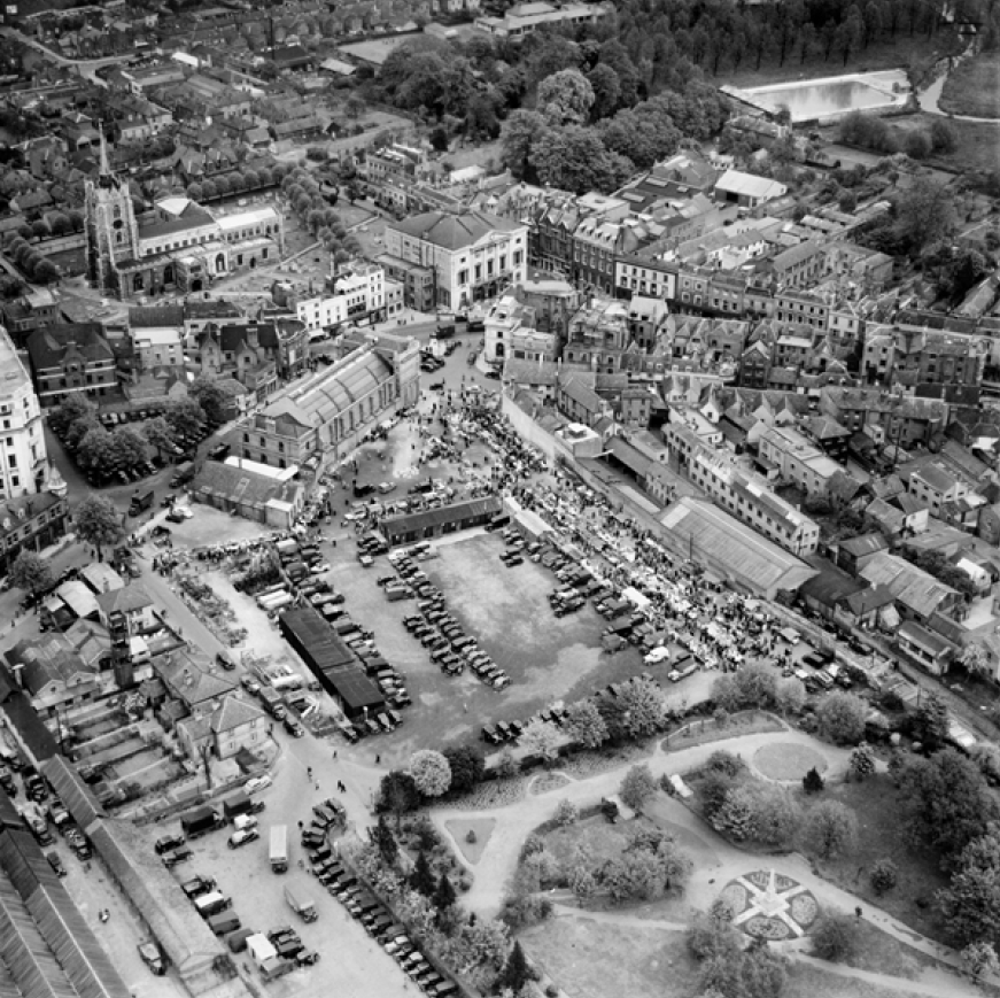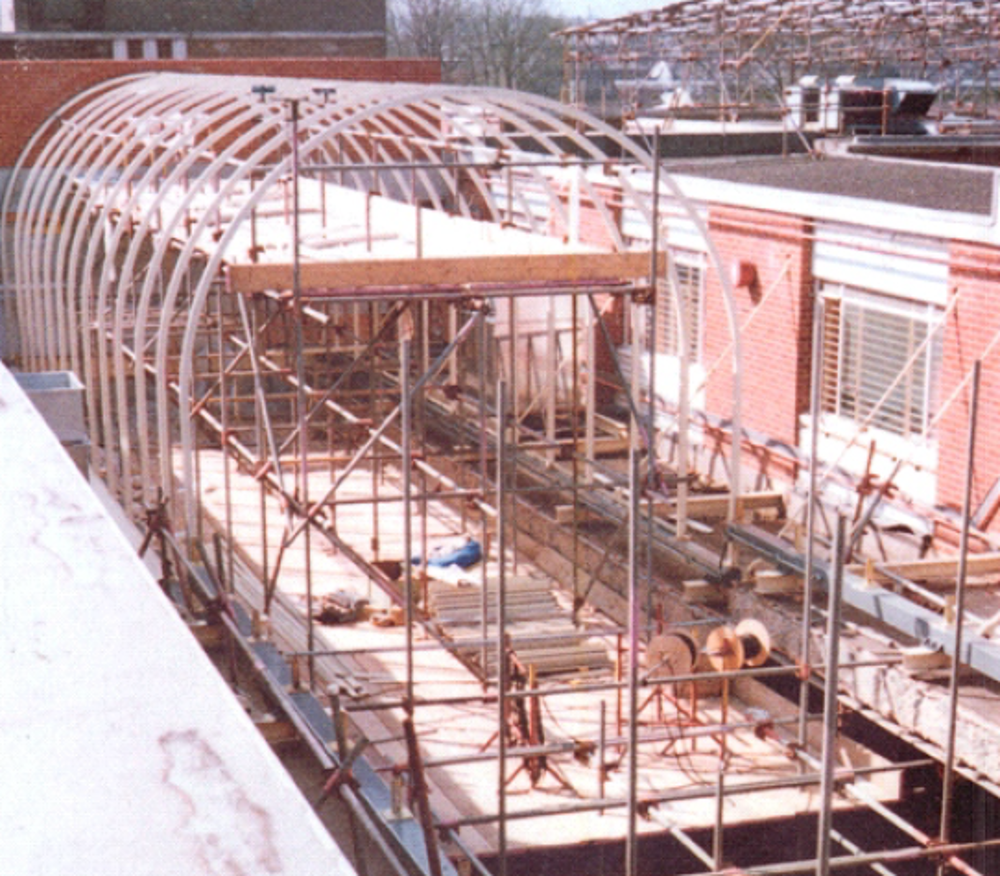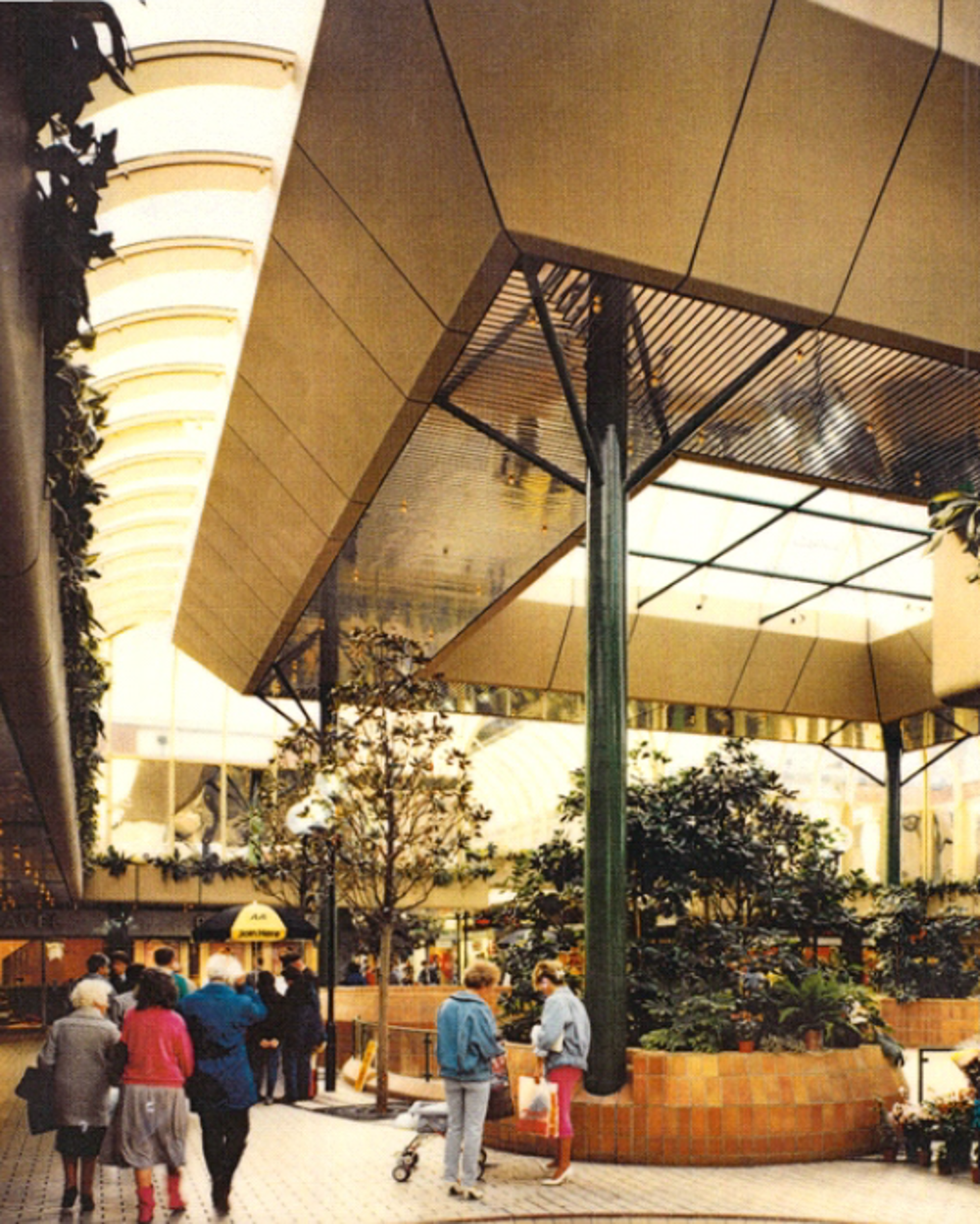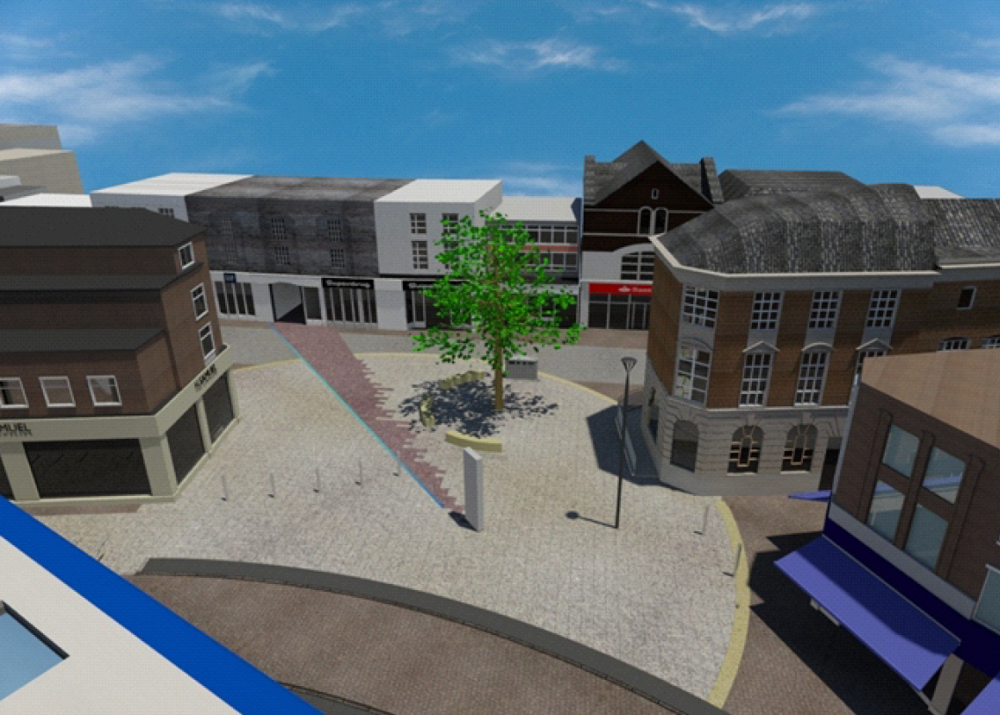Modern Chelmsford
Location of board
Tindal Street, outside wall of Boots
Boom town
In the 1960s and 70s, the High Chelmer shopping precinct and Parkway link-road modernised the town centre. After the precinct's opening, Chelmsford was described by the Essex Chronicle as a “boom centre for Essex”, with High Chelmer being its “heart of glittering gold”. Developers waited over night to enter the town, and store owners, who once passed through Chelmsford to set-up shop in the more prosperous towns of Southend, Basildon and Colchester, came running back.
However, the town's economic advancement came at a cost culturally. The development of High Chelmer devastated the historic core and park of Chelmsford, resulting in the loss of Tindal Street, the Corn Exchange and part of Bell Meadow. Such destruction led the president of the town's Chamber of Trade and Commerce, Peter Ayers, to express that Chelmsford had “gained physically but lost out spiritually.” Although mourned today, the demolition of historic buildings to make way for growth in town centres was commonplace across the nation at this time and has become part of their changing identity.

Aerial view of High Chelmer, 1984
Precinct plans
A decade after the shopping precinct had initially opened, Chelmsford's “heart of glittering gold” started to beat more slowly. There was growing competition from other shopping complexes in Essex, particularly covered centres, and Chelmsford was struggling to keep up.
High Chelmer was now perceived as a drab and uninteresting precinct in need of a major overhaul. In 1983, plans were revealed to “turn Chelmsford's tatty town centre precinct into one of the finest covered shopping centres in the South East.”
The budget was set at £2 million to re-floor and re-fit the premises whilst providing new seating, lighting and greenery. Entrances to the centre would be sealed off out of hours to prevent vandalism and allow an intensive cleaning and maintenance service to take place overnight.

Barrel roof construction, High Chelmer, c. 1984
Plans to cover the precinct with an ultra-modern arched roof were also part of the refurbishment, as well as an open-plan cafeteria called Butterflies, located in the Central Square. In this area, a pyramid-shaped centrepiece with a mirror-finish supported by four pillars was also proposed.
It was not long after these refurbishments that plans for another covered centre in the town centre also emerged, The Meadows Shopping Centre, which was completed in 1992.

Mirrored pyramid in Central Square, High Chelmer, c.1985
Further improvements to High Chelmer have been carried out in the decades since the 1980s, including:
- extensions to create additional retail space
- further screening of the service yards from the public
- remodelled entrances
- a new café in Central Square
- improved flooring, which has a river motif running throughout, depicting the three rivers of Chelmsford
In 2017, over one thousand solar panels were installed to the roof of the centre, so it could become more energy efficient. In 2016, the most northern part of the premises, Exchange Way, was revamped into a contemporary eating quarter called The Exchange.
Half Moon Square
In 2016, another shopping area named Bond Street opened on the east side of the High Street, strengthening Chelmsford's position as a leading retail centre in Essex. In order to keep Chelmsford as a premier shopping destination, and to coincide with the development of Bond Street, in the same year, the City Council carried out a public realm improvement project to part of the High Street, in an area now known as Half Moon Square.

Original concept drawing of Half Moon Square, 2014
The area was named after the Half Moon inn that resided there, one of the many public houses and inns that used to occupy Chelmsford. The area is located where the High Street meets High Chelmer and Bond Street and is an integral space that links the High Street with the two shopping destinations.
As part of the works, the pedestrian area was widened and resurfaced with paving in the shape of a crescent moon. In addition, the crossing to High Chelmer improved, two new trees planted, and wayfinding signage and benches were installed. It has been designed as a meeting point, a space to rest in, as well as an area where public events can occur, whilst reviving the qualities of the historic buildings that frame it.

Aerial view of city centre before the development of Bond Street (Credit Mark Springett, 2012)
Bond Street
In 2016, the Bond Street development opened. Its name originates from the existing Bond Street road it extends from. The retail area was the second phase of development, following the completion of the mixed-use development located northeast of the site. The scheme was designed to reconnect the historic town centre to the riverside, whilst bringing activity and vibrancy to a once neglected surface car park.
The whole development consists of approximately 28,000 sqm of commercial floorspace; a promenade connecting to the High Street; a riverside walkway; public open space; and an underground car park. In continuation of the pedestrianisation of the High Street, which occurred in 1992, much of the shopping area is only accessible by foot, with vehicle movement restricted to the basement car park, concealed service yards and emergency vehicles only.
Conclusion
Chelmsford's past is rooted in its market town origins, which began in Roman times when Chelmsford was known as Caesaromagus (meaning Caesar's Market). This legacy has remained right up until the granting of City Status in 2012, when Chelmsford was successful in its bid to become the first city in Essex, in commemoration of the Queen's Jubilee.
Recent developments have provided a new evolution in the history of Chelmsford's retail industry and even as the city grows, the heritage of Chelmsford will continue to be celebrated.
For more information about Chelmsford's history, and to view the Essex Chronicle archive, you can visit the Essex Record Office.
